
List of 6 Positive Guidance Strategies for Teachers I suggest posting
Positive Guidance Strategies: A Helpful Guide for Parents Raising children can be one of the most challenging parts of life's journey. It's important for parents to teach their kids the difference between right and wrong, but it is also equally important for children to know that they are loved unconditionally.
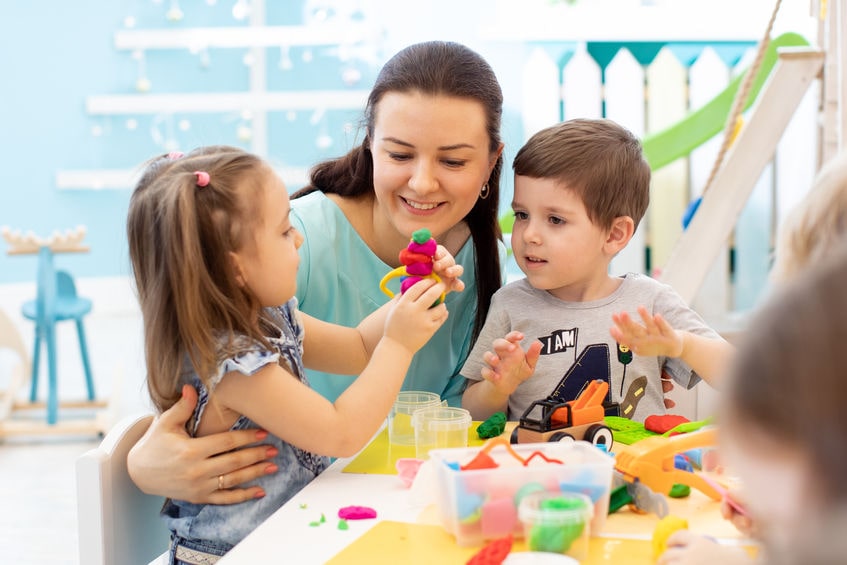
4 Positive Guidance Strategies for Every Parent Wee Care Preschool
Guidance: An Introduction. This lesson introduces the concept of positive guidance and its critical importance in a relationship-based child care and youth program. You will learn how one's beliefs about adult-child relationships, knowledge of developmentally appropriate practice, family practices, and cultural context impact beliefs about.

PPT Positive Discipline & Guidance PowerPoint Presentation, free
Use positive guidance strategies to help your child develop self-control. For example, offer gentle reminders, phrased in a way that tells them what behaviors are expected. "Be sure to hang up your coat on the hook." "You can each have a bucket to use in the sandbox." "Put a small dot of toothpaste on your brush. You won't need much.

PPT Positive Guidance and Discipline PowerPoint Presentation, free
Research has shown positive behaviour support (PBS) is highly effective in preventing and addressing challenging behaviours in the classroom. It reduces stress, clears up much-needed time for teaching, improves overall student behaviours and creates better classroom cultures.

Positive Guidance Techniques Negotiation Learning
Supporting Positive Interactions with Children is a practice guideline for early childhood educators to foster respectful and responsive relationships with children. The guideline provides practical strategies, case studies and self-reflection questions to help educators enhance their professional practice and ethical decision-making.

Positive Guidance Techniques Lesson Child Development YouTube
Nurturing, trusting relationships A safe, peaceful environment Effective positive guidance teaching and practices We encourage teachers to: Spend quality time every day talking and listening to each child. Give children the same respect given to adults. Set realistic expectations for children.
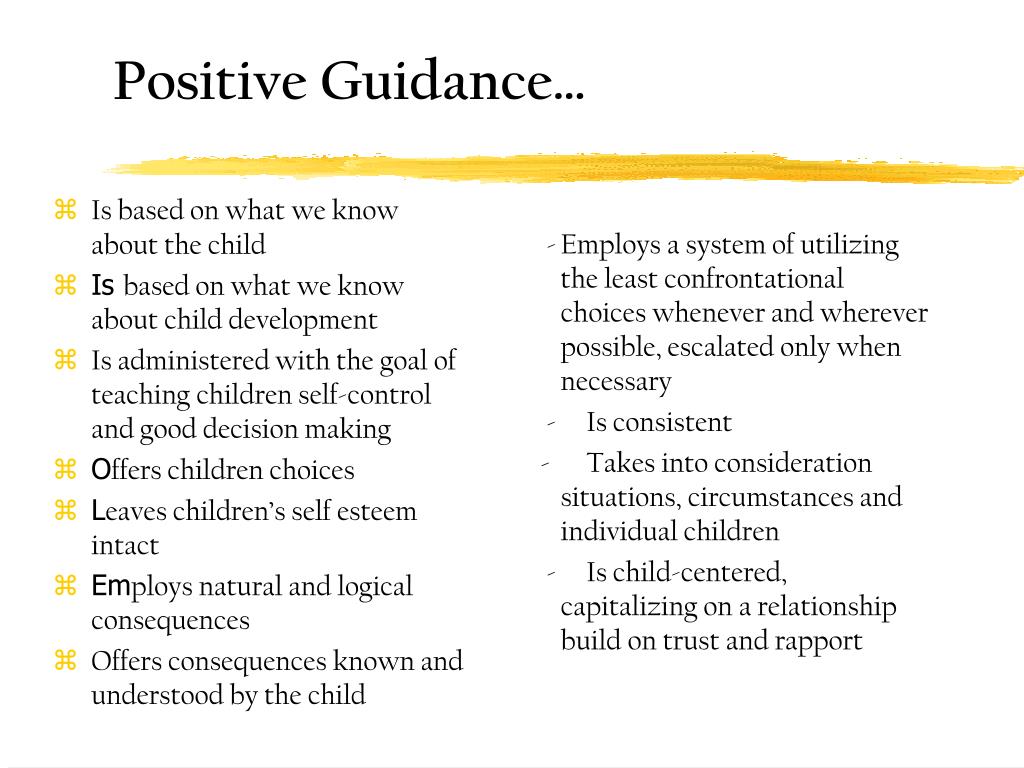
PPT Positive Guidance Techniques PowerPoint Presentation, free
1. "State suggestions or directions in a positive form." Tell children what they should do instead of what they should not. Keep directions simple so children will understand what is expected of them. Be specific so they know exactly how to follow your directions. "Be nice" or "Share" may be too general to help children change their behavior.

PPT Positive Guidance and Discipline PowerPoint Presentation, free
Objectives Describe the relationship between school-age development and behavior. Explain boundaries and expectations and why they are important tools in promoting positive behavior. Develop techniques for managing and guiding behavior in the school-age learning environment. Learn Know Understanding Behavior and Development
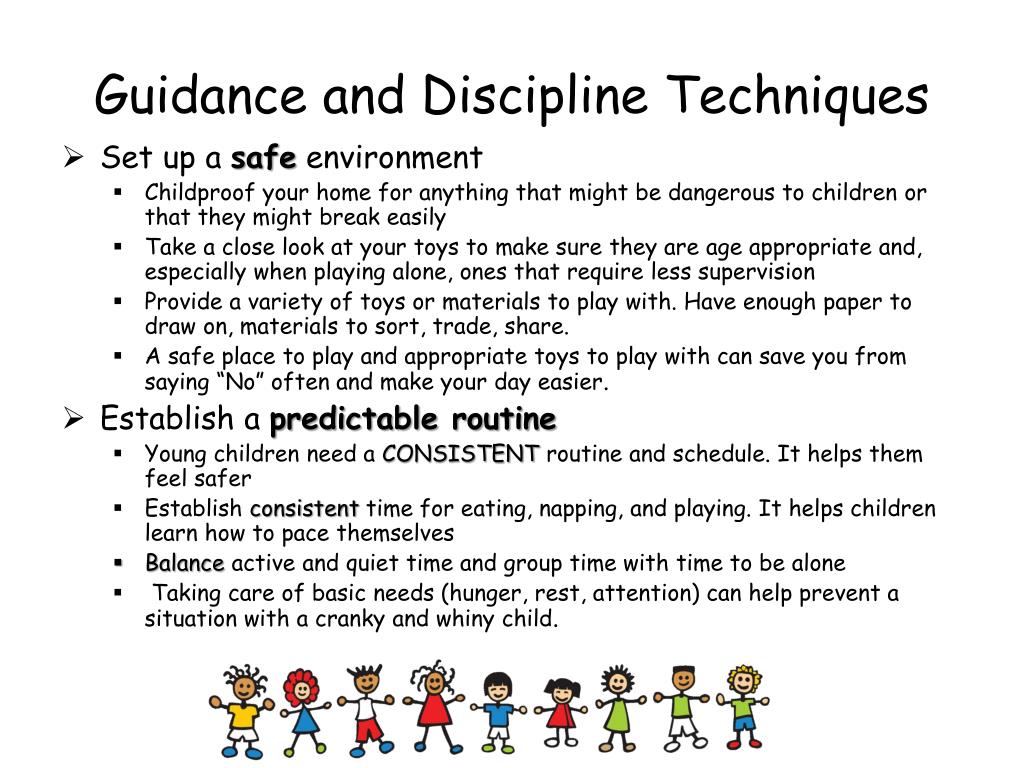
PPT Developmentally Appropriate Positive Discipline Strategies for
Positive child guidance helps promote the social, emotional, and cognitive development of children across ages. This lesson will define positive guidance, describe why it is important for infants and toddlers, and detail what you can do to promote it in your program. 2 Guidance: Infants and Toddlers

PPT Positive Guidance and Discipline PowerPoint Presentation, free
Positive Guidance: The Key to Classroom Management 1. Use the Safety Rule Basic rules and limits are necessary within the early childhood classroom. Children feel more secure if they know what behavior is acceptable and what behavior is unacceptable.

NSPCC Positive parenting and positive discipline techniques will lead
Planning for Positive Guidance: Powerful Interactions Make a Difference Encouraging Positive Behavior Article Building Environments That Encourage Positive Behavior: The Preschool Behavior Support Self-Assessment Article Rocking and Rolling—It Takes Two: The Role of Co-Regulation in Building Self-Regulation Skills Blog Bullying in Early Childhood
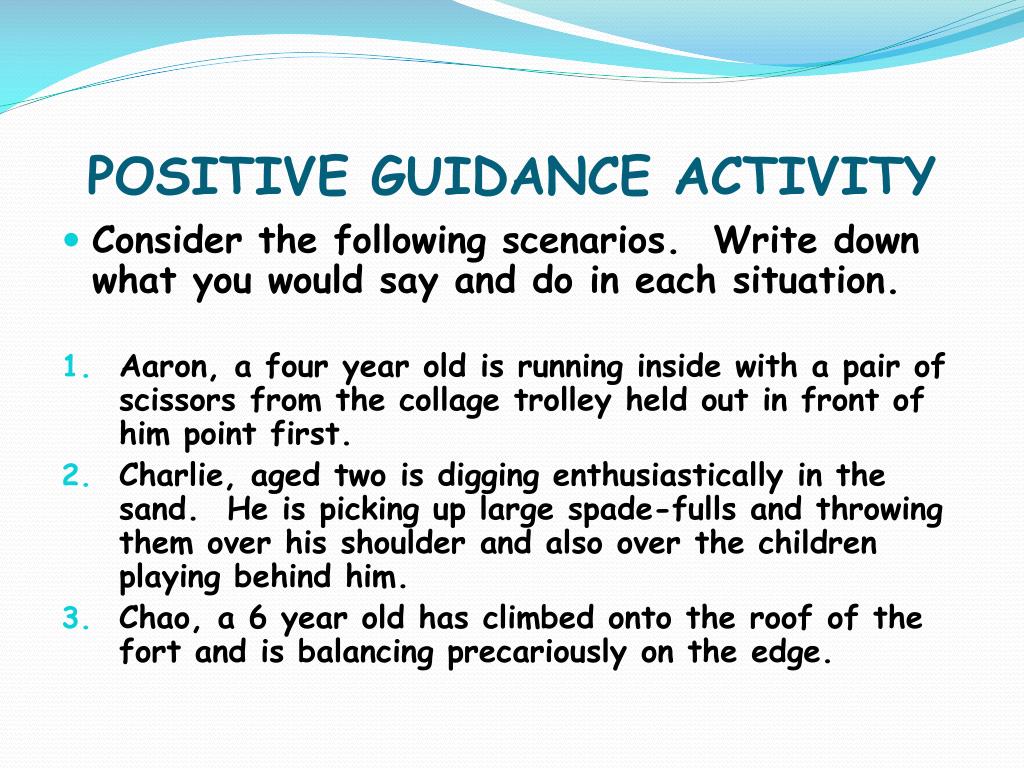
PPT POSITIVE GUIDANCE PowerPoint Presentation, free download ID1794690
Positive Guidance in Early Childhood Education Learn how using positive guidance as a response to negative behavior can help young children develop healthy social-emotional skills. brightwheel Blog Guiding children's behavior effectively takes preparation, observation, and consistency.

FREE Webinar Nurture Children with Positive Guidance Positive
Positive behavior strategies are evidence-based, proactive approaches to changing challenging student behavior. Some examples of positive behavior strategies are pre-correcting and prompting and nonverbal signals. There's a lot to think about when it comes to teaching. You plan and deliver lessons to cover the curriculum.
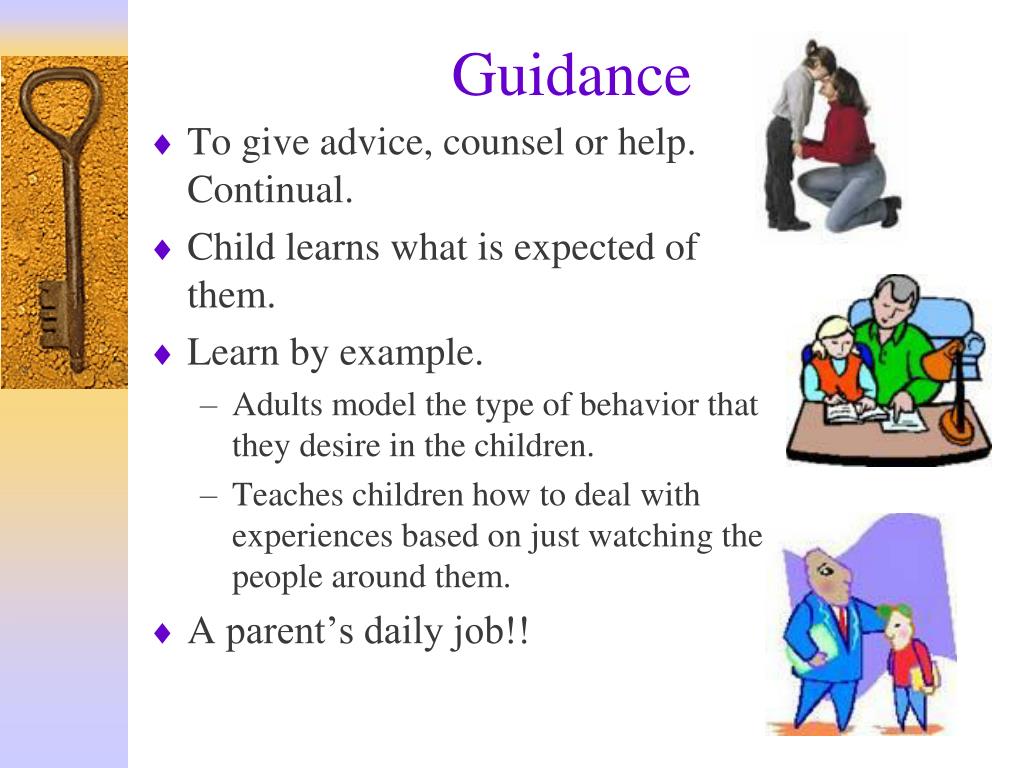
PPT Positive Discipline & Guidance PowerPoint Presentation, free
Guidance Strategies Prevention. Preschool Canada Learning Academy . 21 . Focus on the BEHAVIOUR, rather than on the Child Focus on a child's behaviour. Give positive guidance for learning. Some messages can be seen as attacking or critical of a child's character and may produce feelings of guilt and shame and lower self-esteem.
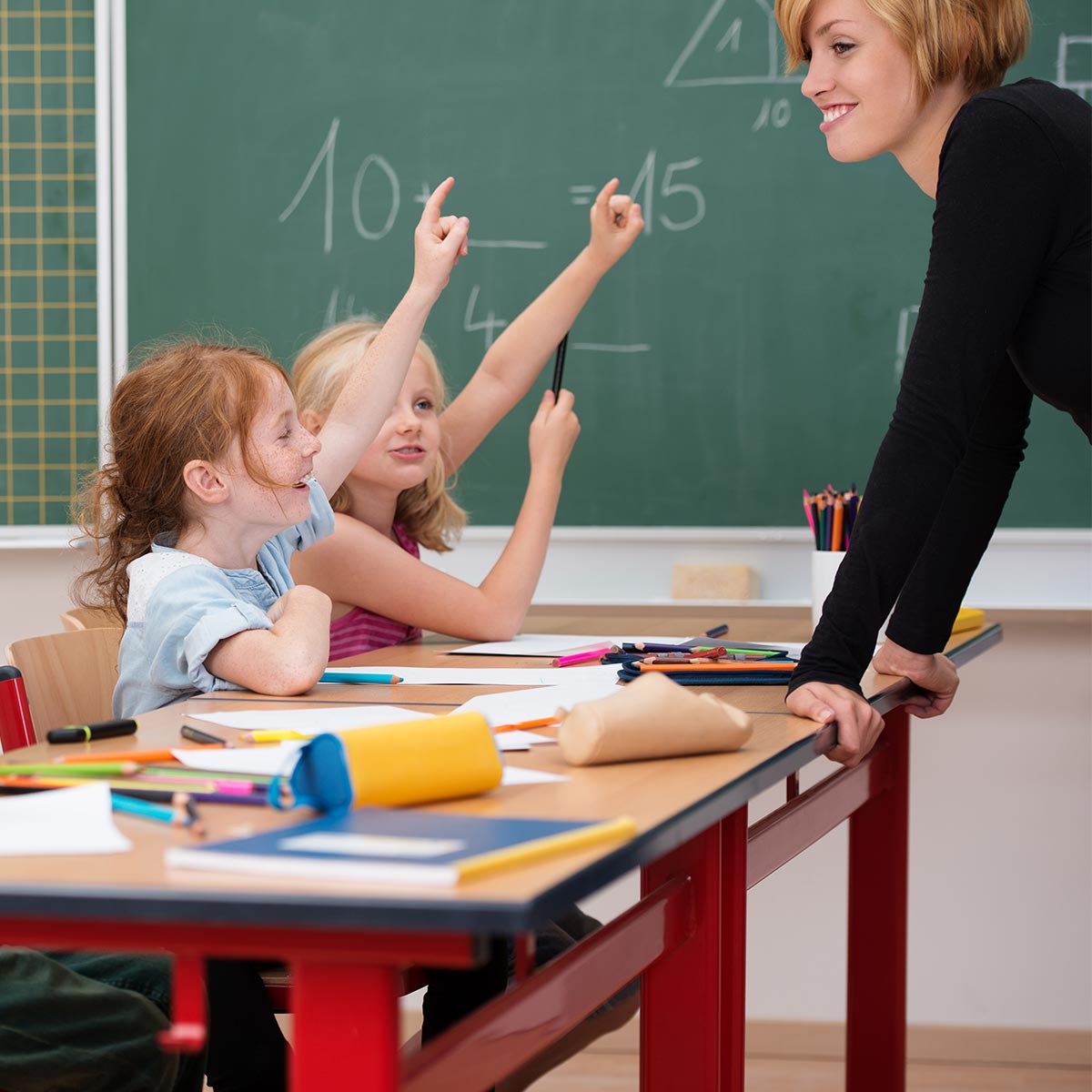
Positive Guidance Strategies for Children Kiddi Kollege
Positive guidance strategies harness the power of culturally responsive teacher-child relationships to help children learn and succeed. Positive guidance is grounded in adult knowledge that all children are capable of learning. Educators set high expectations for children and champion their efforts with positivity, support, and confidence in.
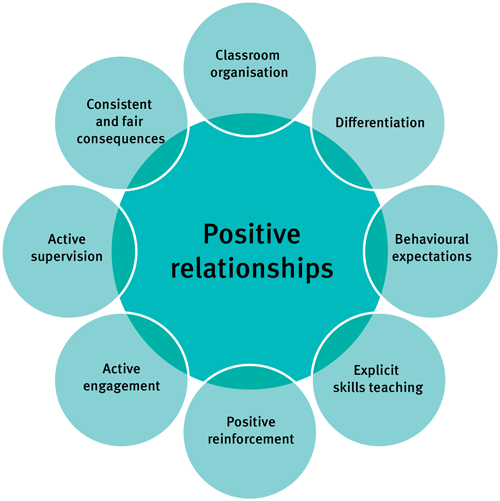
Positive Behaviour for Learning in the classroom
1. Be clear about roles. When we plan together, we clarify who will do what and when. Our goal is to be predictable about our roles during routines so that the children can anticipate what's going to happen and who to look to for directions. This reduces challenging behaviors significantly.